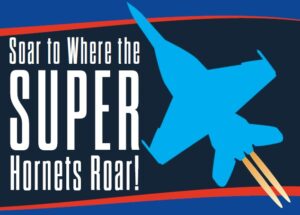Westinghouse Italian subsidiary
TYPE
Electric engine
BUILDER
Built around 1910 by an Italian subsidiary of Westinghouse, this freight locomotive operated off a three-phase, 2,000-volt A.C. electrical system and developed 2,000 horsepower from its two motors. It had a top speed of 31 mph. The engine arrived at TNMOT in 1968.
TYPE
Handcar
BUILDER
A handcar is a railroad car powered by its passengers, or by people pushing the car from behind. It is mostly used as a maintenance of way or mining car. This particular handcar was used on the Mississippi Rive & Bonne Terre Railway.
Pyke
TYPE
Crane
BUILDER
Maintenance of way equipment - 18 ton crane. Built in 1984.
Fairmont Railway Motors Inc.
TYPE
Speeder
BUILDER
A speeder (also known as railway motor car, putt-putt, track-maintenance car, crew car, jigger, trike, quad, trolley, inspection car) is a maintenance of way motorized vehicle formerly used on railroads by track inspectors and work crews to move quickly to and from work sites. Although it is slow compared to a train or car, it is called a speeder because it is faster than a human-powered vehicle such as a handcar.
TYPE
Baggage
BUILDER
#430 St. Louis–San Francisco Railway Heavy Weight baggage car was also known as SLSF 109103.
American Car & Foundry
TYPE
Mail Express Car
BUILDER
American Car and Foundry built this 60' long mail/express car for about $8,000. It weighs 80,000 pounds, has a wooden body and its underframe is also wood with a steel center sill. The truss rods visible along the sides below the floor are bolted through the end sills and strengthen the underframe. The turnbuckles that join the two ends of each rod at the center of the car can be adjusted to keep the car's body straight and level. The railway post office markings show that the separate 15' long mail "apartment," as the post office called it, met the standards for handling U.S. mail. The mail catcher arm on its door could pick up sacks of first class mail at speeds of up to 80 miles per hour. Donated by the St. Louis - Southwestern Ry in 1952.
TYPE
Caboose
BUILDER
Missouri-Kansas-Texas #1 Caboose was built in 1882. Wood car; steel center sill added; side door and cupola removed; part of Katy Flyer train.
Manufacturer's Railway
TYPE
Boxcar
BUILDER
Boxcar was built in 1954. This 55-foot steel boxcar was rebuilt by Manufacturers Railway in 1979.
Illinois Central Railroad
TYPE
Dynamometer Car
BUILDER
Built by the Illinois Central Railroad at its' Burnside shops in Chicago with the instruments provided by the University of Illinois (the car jointly owned). The dynamometer car is a rolling laboratory that tests the pulling power of locomotives. The front coupler is attached to the frame by a hydraulic cylinder. The pull of a locomotive moves a piston in the cylinder and measuring instruments in the car record the data. The system is so sensitive it can detect the force of a person pulling on the coupler and so strong that it tested an engine pulling a 213 car coal train. Number 30, a steel car, is 60' long, weights 125,000 pounds. Test trips on the car could last for several days, and as a result, the car contains facilities to house and feed the test crew and a dining car cook: two staterooms for four people each; lockers, toilet, shower, and kitchen. It also contains an operating compartment with recording table, instruments and tool bench. This car was last used behind a steam locomotive in 1952 and was only used once behind a diesel-electric in 1955. It was donated in 1969 by the Illinois Central Railroad and the University of Illinois.
Diesel Electric D Model SW8 BB
TYPE
General Motors Electro Motors Division
BUILDER
#2002 has an 800 hp, two-cycle diesel V-8 engine and is 44'5" in length. It weighs 230,000 pounds and has a maximum speed of 65 mph. The U.S. Army ordered 41 SW8 engines for service in Korea during the Korean Conflict. The #2002 served with the 724th Transportation Railway Operating Battalion in Korea. At the end of the war #2002 was returned to the United States and operated at the Red River (Texas) Army Depot and later at Fort Leonard Wood, MO.








